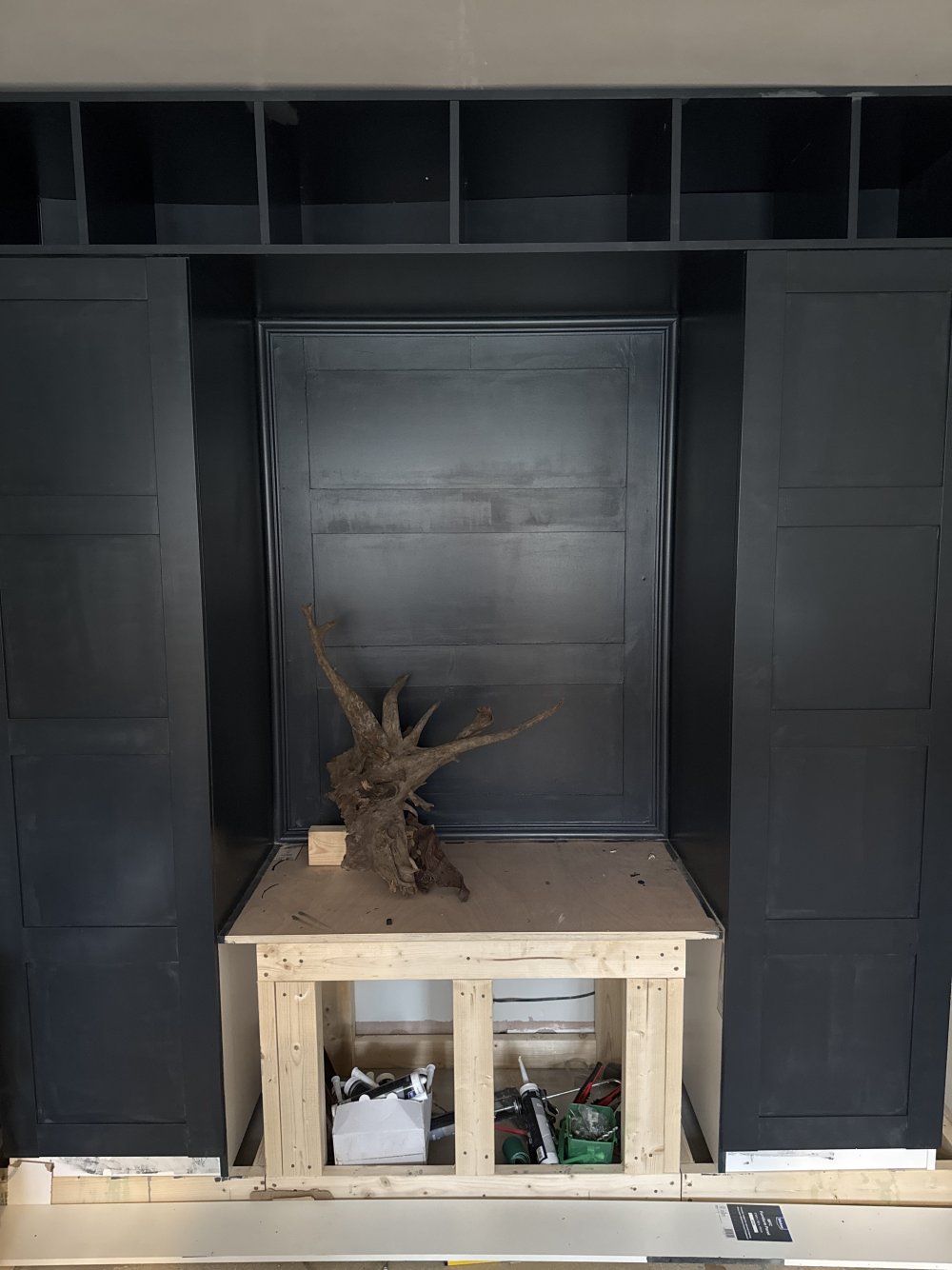Matth22
Member
So after finally getting the hang of keeping plants alive 😂 (it’s only been 4 years) I am now building my office aquarium, which is around 350 litres, sitting on a 2x4 over engineered stand sandwiched between a pair of ikea pax units, with a tall larder unit running horizontally across the width as a bookshelf and for somewhere to hang the ONF flat one + light I’ve purchased for the job
Part of the reason I’ve had trouble growing plants is the hard water in my area. I’ve resolved this by doing a 50/50 cut with tap and RO water.
RO has been coming from a 3 stage unit I’ve had sat outside and is labour intensive for my current 160lt tank back and forth with buckets. Plus during the recent cold snap it froze over and cracked a couple of the filter housings.
I’ve purchased in its place a 600gpd, tankless under sink unit which I plan to install under the kitchen sink and use for drinking as well as aquarium use - I can run some RO pipe from under the sink and through the wall my aquarium will sit against no problem and have bought a float valve which has top offs sorted!
Question 1 - I want to use pure RO for top offs but will need to remineralise for water changes. Can I mix remineraliser directly into the tank during the water change?
I’m then thinking of setting up a T joint in the inlet pipe between the inlet and filter with a valve so I can open it and use gravity to empty water directly into the kitchen waste
Question 2 - any obvious reason this wouldn’t work?
In progress build picture attached - the tank is the dimensions of the 2x4 stand if anyone is worried about the overhang - that’s for pipework and will be covered to the height of the tank 😉
Part of the reason I’ve had trouble growing plants is the hard water in my area. I’ve resolved this by doing a 50/50 cut with tap and RO water.
RO has been coming from a 3 stage unit I’ve had sat outside and is labour intensive for my current 160lt tank back and forth with buckets. Plus during the recent cold snap it froze over and cracked a couple of the filter housings.
I’ve purchased in its place a 600gpd, tankless under sink unit which I plan to install under the kitchen sink and use for drinking as well as aquarium use - I can run some RO pipe from under the sink and through the wall my aquarium will sit against no problem and have bought a float valve which has top offs sorted!
Question 1 - I want to use pure RO for top offs but will need to remineralise for water changes. Can I mix remineraliser directly into the tank during the water change?
I’m then thinking of setting up a T joint in the inlet pipe between the inlet and filter with a valve so I can open it and use gravity to empty water directly into the kitchen waste
Question 2 - any obvious reason this wouldn’t work?
In progress build picture attached - the tank is the dimensions of the 2x4 stand if anyone is worried about the overhang - that’s for pipework and will be covered to the height of the tank 😉




